What to consider when camouflaging pipes?
Hiding pipes in the bathroom is easy, the main thing is to do it right. Careless bricking of pipes into the wall can lead to a serious accident and leakage, and the finish will have to be dismantled.
How to hide pipes correctly?
- It is possible to tightly sew up water pipelines only if there are no or a minimum number of high-quality connections. In this case, the entire pipeline must be made of one material (plastic pipes - plastic connections).
- The design should provide for a door (inspection hatch) in the places of meters, filters, main taps at the entrance to the apartment - so you will always have access to pipes and devices.
- If the task is not just to mask, but to brick up the pipes in the bathroom, use an additional foam casing. It protects pipes with cold water from condensation, while hot water allows it to expand and contract freely.
The photo shows an example of a rough finish of a bathroom
Not all water supply elements can be stowed away or hidden behind a blind partition. It is strictly forbidden to close:
- Connections with T- or X-shaped fittings (high risk of leakage).
- Threaded connections (can run at any time).
- Counters and other devices (monitoring required).
In the photo, a version of the revision hatch in the wall made of tiles
How to close the pipes?
There are several ways to hide pipes in the bathroom: here, as they say, who has enough imagination, funds and skills for what. Let's take a look at the most popular pipe masking options.
Look more how to seal the joint between the bathroom and the wall.
Sew up into a drywall box
The cladding is carried out pointwise, or a whole false wall is being erected: it all depends on the initial location of the communications in the bathroom. A false wall takes away a decent part of the usable area, which can be a fundamental point in small bathroom... But at the same time, ugly, but functional risers, meters, filters, and a toilet system are hiding behind it. And outside there is only decorative furniture and plumbing.
The step-by-step process for the first and second options is generally similar, the differences will only be in size:
- Mount the frame from metal or wooden profiles, keeping the angles 90C.
- Cut drywall into sheets of the desired size, screw to the base with special screws.
- Prime and putty the joints through the mesh.
- Refine with the selected finishing material (tile, paint, mosaic, panels, plaster).
For a bathroom, only moisture-resistant drywall (GKLV) will be suitable, but it is better to use a gypsum-fiber board (GVLV). At the same time, although the materials are resistant to moisture, it is not worth using them directly in showers.
Important! Do not forget about installing a window through which you can check the condition of the pipes and record the readings of metering devices.
Close with PVC panels
Plastic panels are inexpensive and easy-to-use material.You should not give up this method of hiding pipes, even if more expensive tiles or porcelain stoneware are chosen for the main finish.
A decorative box can be made from an ordinary white plastic panel, which will help cover everything unnecessary without spoiling the conceived design. The option is suitable only if the plumbing communications are arranged and run close to the floor.
You will need:
- a panel of a suitable size;
- 2 starting profiles in color;
- stationery knife;
- sanitary sealant (not afraid of water, suitable for non-porous substrates).
Let's get down to installation:
- Measure the length of the starting profiles, cut to size.
- Apply silicone sealant to the end, stick in the right place to the wall and floor.
- Wait until it is completely dry - the profiles must adhere securely to the surface.
- Try on the plastic panel, cut to size. From the place where the corner is needed, remove the sealing ribs from the inside - this will allow the plastic to bend without unnecessary joints.
- Insert the edges of the panel into the profiles - done!
The advantages of this method in simplicity, speed and the possibility of quick removal if urgent repairs are required. Disadvantages may manifest when creating more complex corner structures - on the market you can find profiles for far from all connections, so some seams may remain open.
Of course, this is not the only way of plastic cladding. Under the bathroom, you can build a screen of plastic plates, and at the location of the riser - a false wall, simply by fixing them on metal profiles instead of drywall.
Hide behind blinds or roller shutters
In order not to come up with complex designs and not bother with installing hatches, you can turn to a ready-made solution: plumbing blinds. In fact, they are roller shutters that, when closed, help to hide pipes in the toilet and in the bathroom, and when open, they replace the inspection hatch, allowing you to check the state of engineering systems.
The main advantage of the roller shutter in almost complete opening: the opening can be at least along the entire height of the vertical pipes - from floor to ceiling. Therefore, in order to hide the sewer pipes in the bathroom, blinds are often chosen. There are also disadvantages - a limited (albeit large) choice of shades, and the appearance itself is not suitable for every interior.
Before buying, you need to decide, what type of construction is right for you: mechanical (opened with a rope construction, like ordinary blinds) or automatic (raised and lowered by simply pressing a button).
To make the right choice, remember the rule: the maximum width of a mechanical model is 50-55 cm. Anything wider should be on automatic.
Second important question - how it will be attached. It is most convenient if there is a niche in the bathroom, along the edges of which the profiles are simply fixed, and on them, flush with the wall, there are roller shutters of the required width. If there is no niche, you still have to build a structure - on the one hand, it will be closed with blinds, on the other, with decor (ceramic tiles, panels).
When installing, be extremely careful: both guides must be exactly level. Even the slightest deviation will cause the mechanism to jam.
Important! Mechanical roller shutters are installed assembled.
In the photo, the design of the revision hatch of the blind
Wall mount
If a major overhaul has begun in the bathroom, you can resort to the most radical method: close the pipes in the stove. This is a time consuming, noisy and very messy process, but the result is a beautiful solid wall with no visible flaws.
To carry out the work, you will need special equipment (wall chaser, grinder or perforator). Before shtrobing make sure of the technical feasibility of laying internal paths the required depth (building codes prohibit violation of the integrity of brick and thin-walled partitions - there is a high risk of violation of the integrity of the structure).
Important! At the beginning of the article, we have listed all the details prohibited for bricking - go back to the list and study it carefully in order to avoid problems in the future.
- Draw up a plan for future wiring on paper, transfer it to the wall. Draw lines strictly according to the level.
- Place the grooves of the desired size along all the drawn lines.
- Prime the recesses, you can additionally protect it with a waterproofing coating.
- Proceed with the installation of pipes.
- Fix the laid communications with cement.
Important! If in doubt, entrust the execution of the work to a trusted construction team. They will replace the pipes with new ones and make a high-quality internal gasket.
Disguise with furniture
The easiest way to hide unnecessary channels is to play with furniture. For example, vanity units. First, you don't have to build anything. Secondly, storage cabinets in the bathroom are essential in any case - why not give them an additional function.
Unfortunately, of all bathroom furniture options, only the "moidodyrs" have the arrangement of the corrugation. In purchased pencil cases and racks, you will have to take care of cutting the necessary holes yourself. But it is best not to buy from a store, but to order custom-made built-in bathroom furniture. Or make it yourself.
In a narrow space, for example, between two walls, you can hang several shelves using special fasteners. And then close it from the outside with doors on ordinary piano or other furniture hinges.
If the riser is located in a corner, build a corner cabinet - it does not take up much space, while it can accommodate most of the things you need for storage.
In the photo there is a cabinet that hides the toilet drain system and the sink siphon
Decorative options
In fact, it is not necessary to hide communications - it is enough to use one of the original decoration techniques, due to which the pipes will simply look better and easily fit into the modern interior.
The simplest option is painting. It is inexpensive, it looks impressive. It works according to the principle "that which cannot be removed, must be emphasized." Matte black looks great, but you can choose any shade: from neutral white or gray to eccentric yellow, red, blue. The most daring can combine two or three colors. At the same time, the processed part can both merge with the wall and deliberately stand out against its background.
Important! The paint must be highly resistant to changes in humidity and temperature. Use a suitable primer to improve adhesion.
If the monochromatic tone seems boring, dilute it with decoupage or stickers: the main thing is that the technique fits the chosen style. Cover the top with a heat-resistant varnish to protect the decor.
People with artistic talent can paint the pipeline to look like bamboo, birch, or other suitably shaped object.
In the photo there are copper pipes in the interior
Another option from the “highlight, cannot be removed” series is integration. Best of all, this number goes in loft style, while the pipes should be chrome, copper or black. They will serve both decorative and functional purposes.
In some styles (scandi, provence, marine), jute winding will be appropriate. Take a rope of a suitable diameter and wind it along the entire visible part of the pipe, including the fasteners.
But for the laziest there is textiles! Hang up curtains and blackout curtains - keep them closed and no one will guess what is hiding behind the beautiful facade. If the communications go only at the bottom, you can install on top storage shelves.
And finally, we remind you once again: when working with pipes, observe all precautions and always leave access to the water supply and sewerage system.

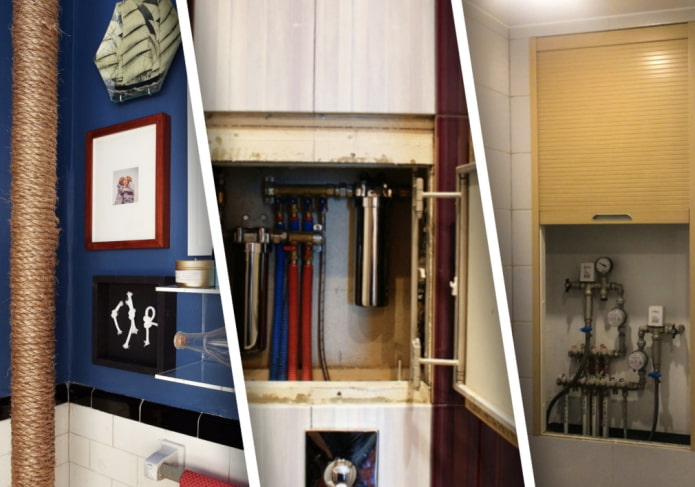
 10 practical tips for arranging a small kitchen in the country
10 practical tips for arranging a small kitchen in the country
 12 simple ideas for a small garden that will make it visually spacious
12 simple ideas for a small garden that will make it visually spacious
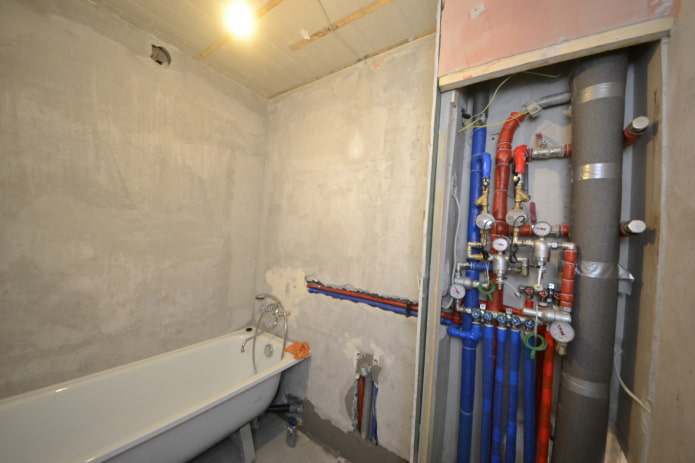
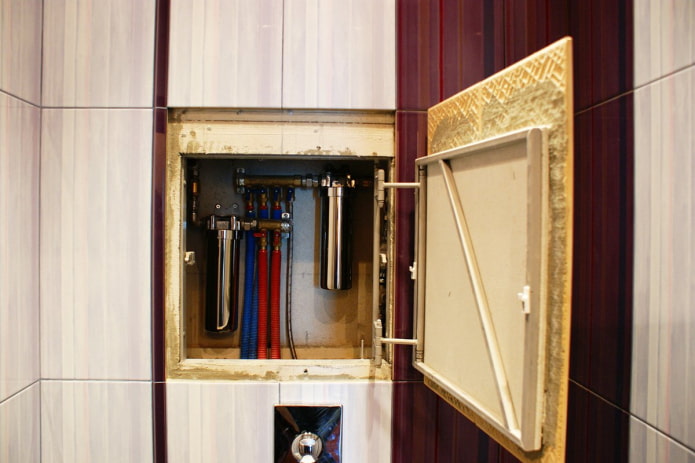


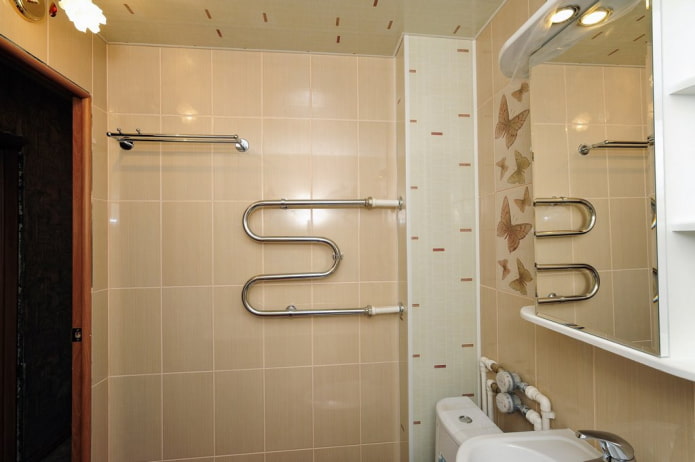
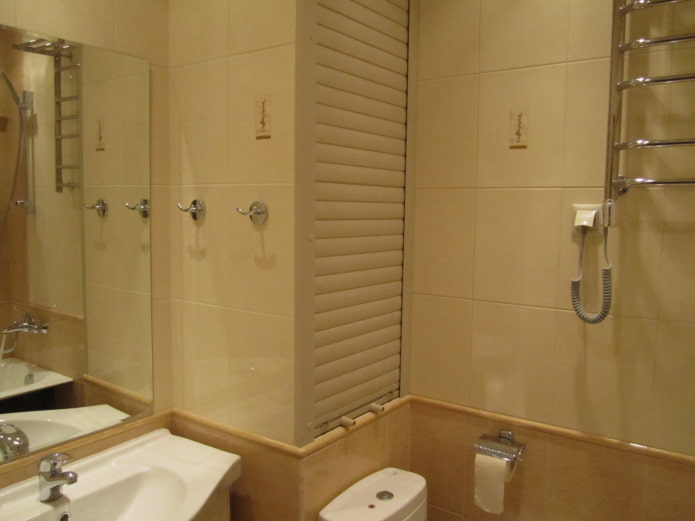
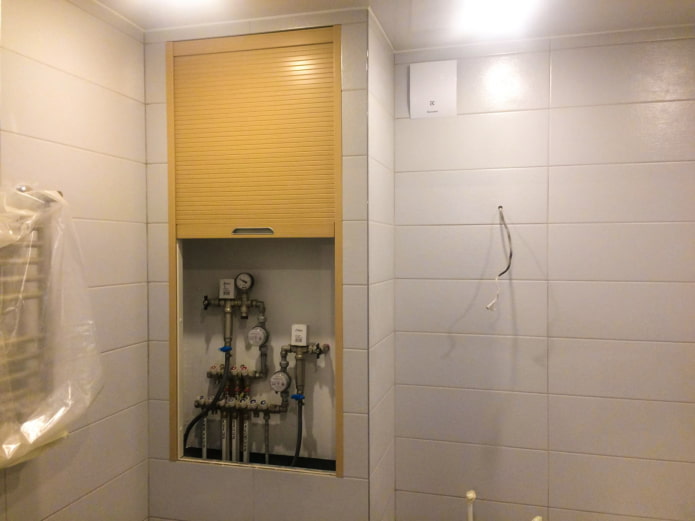
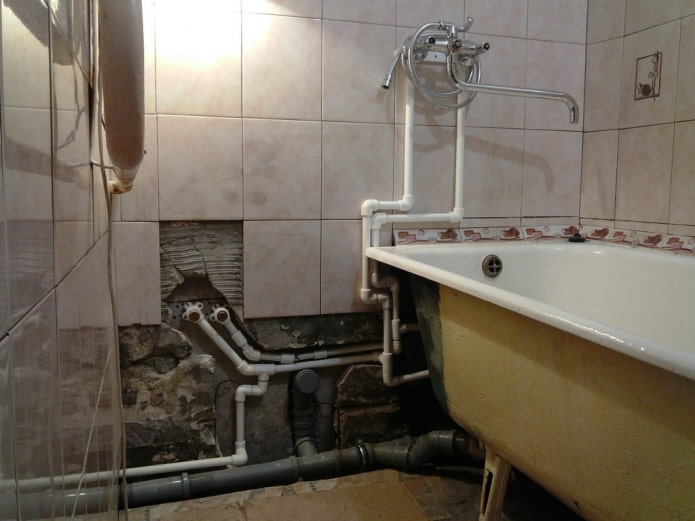
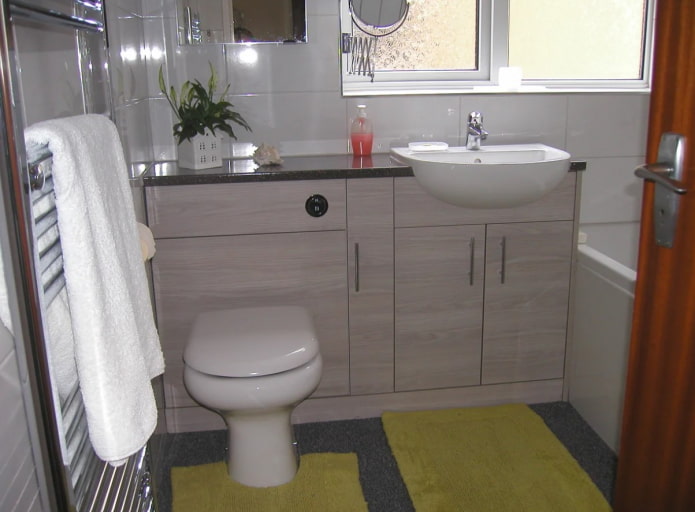
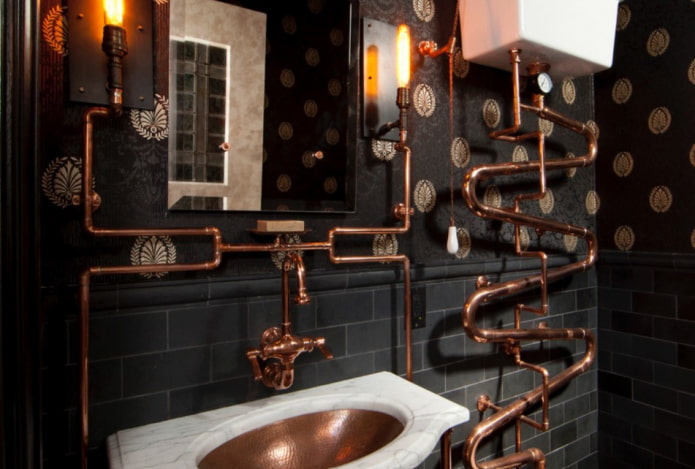
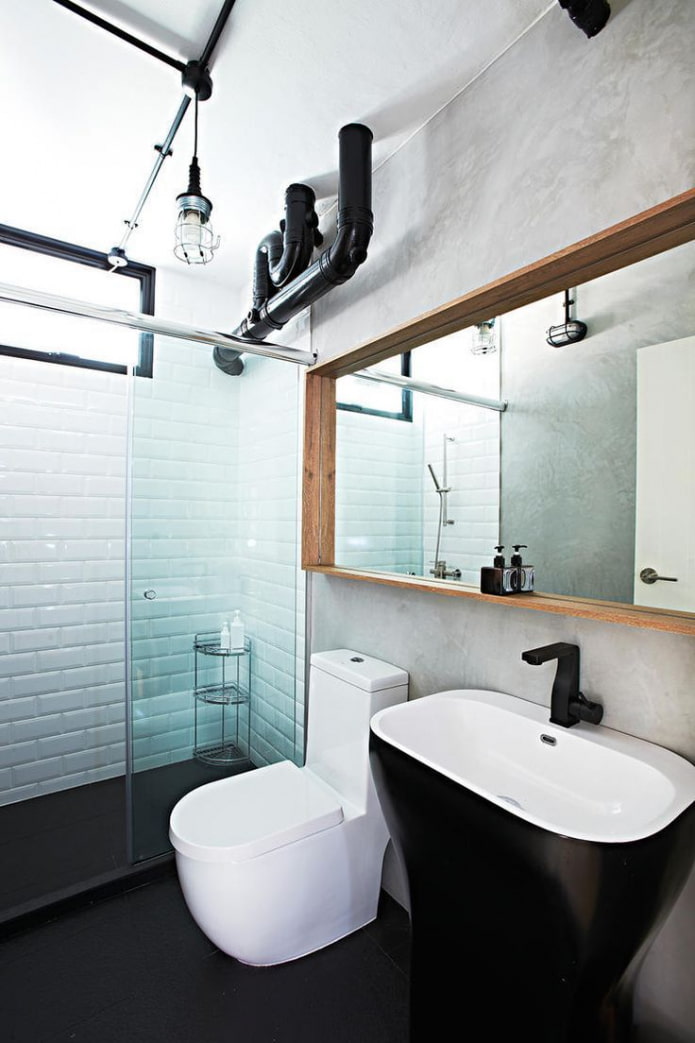


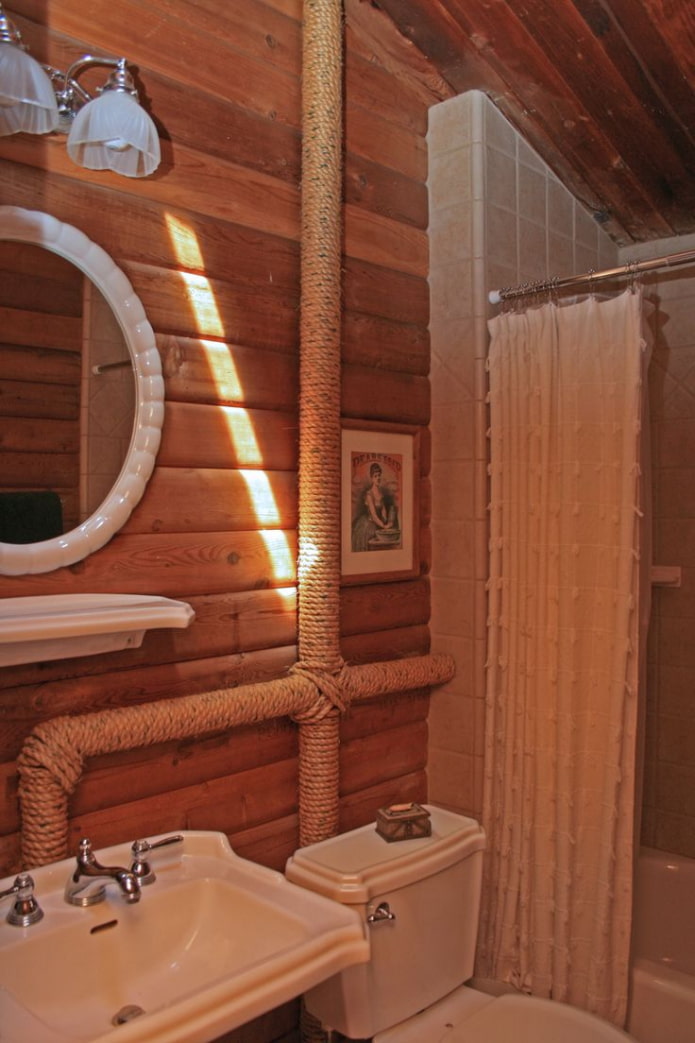
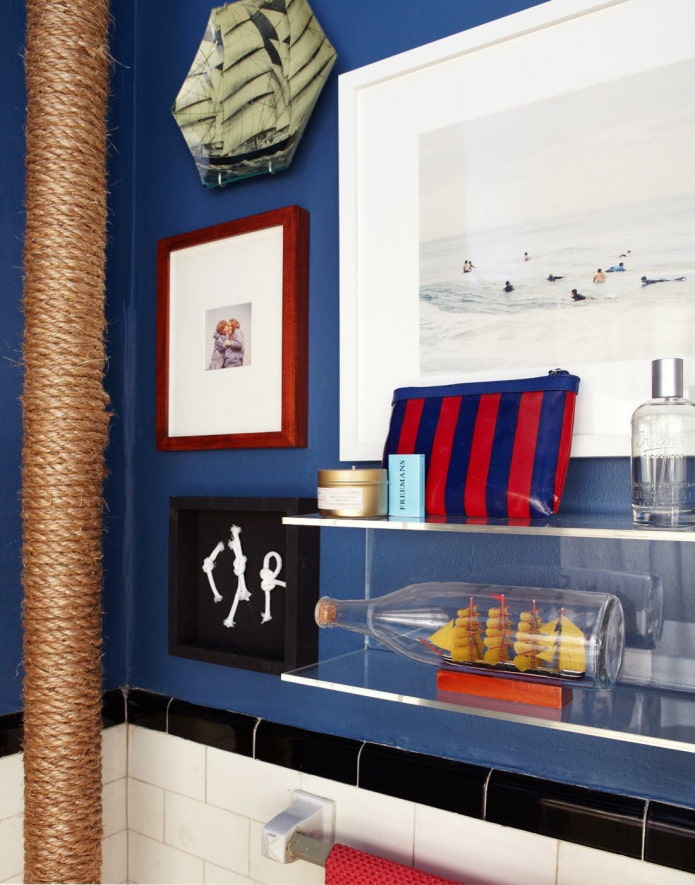
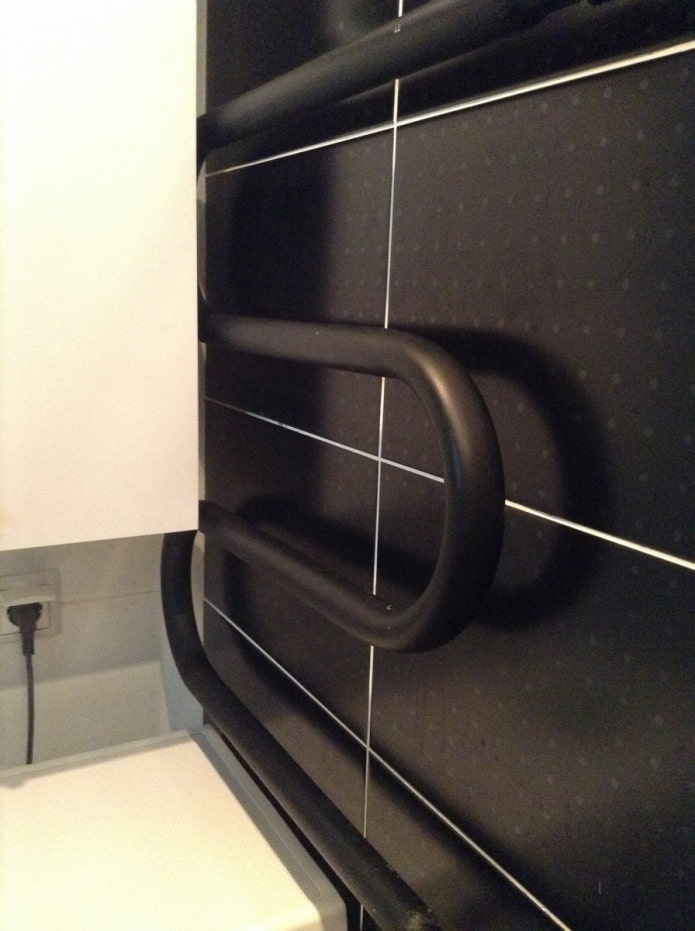
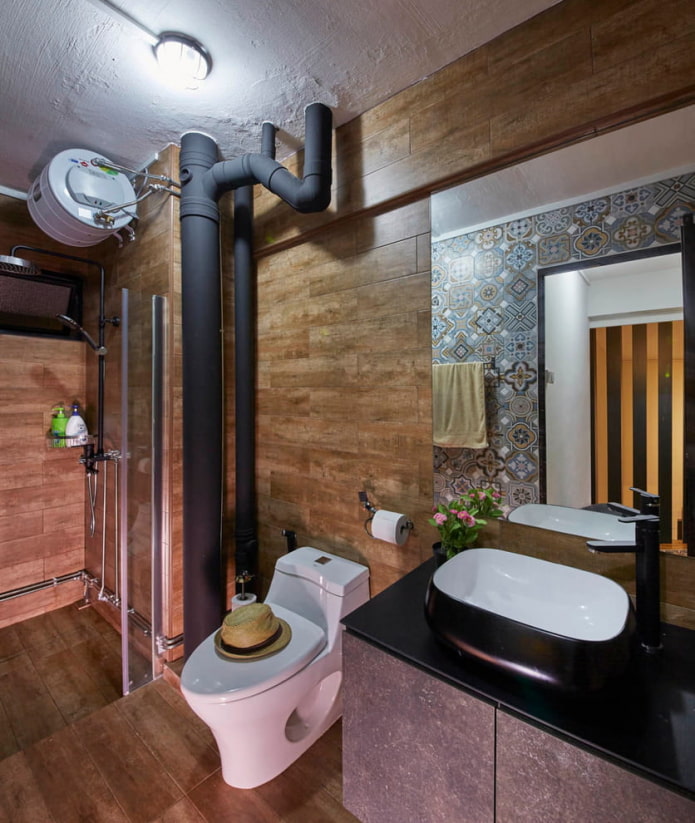
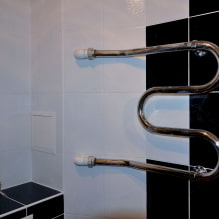
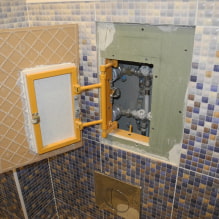

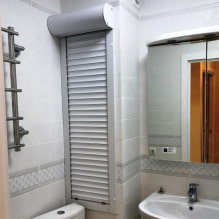
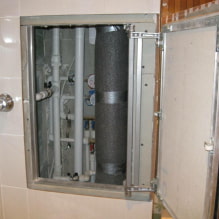
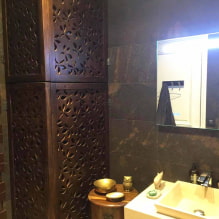

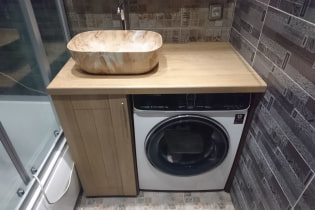 How to position a washing machine in a small bathroom?
How to position a washing machine in a small bathroom?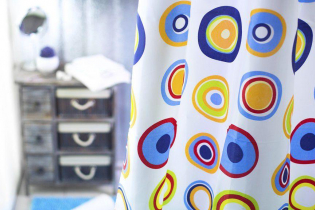 How to remove plaque from the bathroom curtain?
How to remove plaque from the bathroom curtain?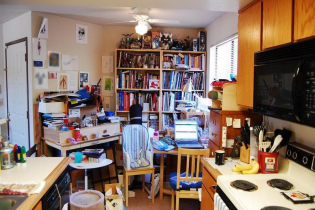 7 common mistakes in small apartment renovation that eat up all the space
7 common mistakes in small apartment renovation that eat up all the space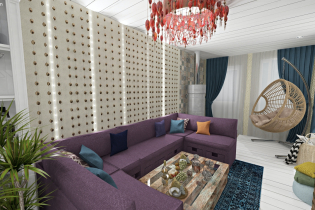 Apartment layout: how not to be mistaken?
Apartment layout: how not to be mistaken?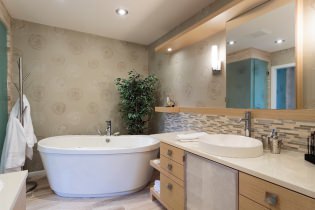 Wallpaper for the bathroom: pros and cons, types, design, 70 photos in the interior
Wallpaper for the bathroom: pros and cons, types, design, 70 photos in the interior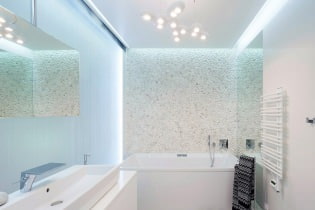 Modern bathroom interior: 60 best photos and design ideas
Modern bathroom interior: 60 best photos and design ideas